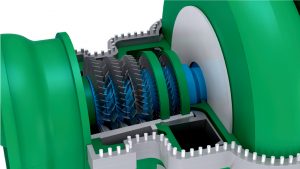Course Description
The Compressors: Ancillary Equipment course in an informative, intermediate-level overview to the ancillary equipment used to purify compressed air. In this course, learners are presented with the types of pollutants removed by the ancillary equipment during the purification stages, the lower-level purification equipment, the higher-level purification equipment, and the compressed air quality standards that drive ancillary equipment selection based on the end-use application of the compressed air. Learners who are compressed air system designers, compressed air system installers, and compressed air end users will find value in this course.
Who will benefit from this compressor air purification equipment course?
Any learner who must use or be familiar with the ancillary equipment used to purify compressed air, compressed air quality standards, and the stages of air purification.
Course Classification

*THORS uses the Bloom’s Taxonomy Methodology for our course development.
Certificate Awarded for Compressors: Ancillary Equipment

*upon successful completion
Related Posts

The Role of eLearning in Compliance Training
In today’s fast-changing business environment, effective compliance training is more crucial than ever. eLearning in compliance training has emerged as a powerful tool for ensuring

5 Reasons Why a Culture of Learning can Lead to Success
Learning is continuous. After all, there are always new skills to learn and techniques to adopt. A culture of learning in an organization can also

Is your issue a skills gap or a knowledge gap?
You may have received a call to action to address the skills gap, which might feel making a bridge across the Grand Canyon with a



